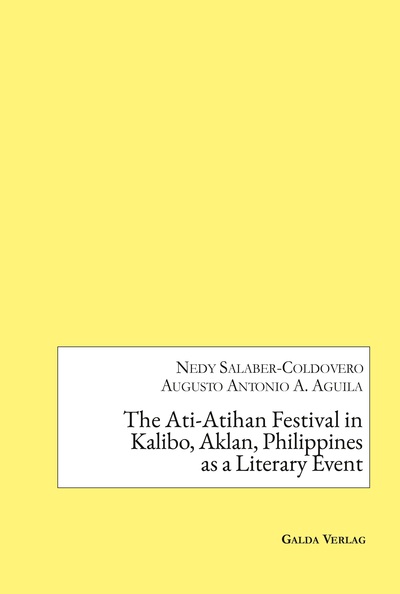Nous utilisons des cookies pour améliorer votre expérience. Pour nous conformer à la nouvelle directive sur la vie privée, nous devons demander votre consentement à l’utilisation de ces cookies. En savoir plus.
The Ati-Atihan Festival in Kalibo, Aklan, Philippines as a Literary Event
EAN : 9783962031671
Édition papier
EAN : 9783962031671
Paru le : 30 avr. 2021
46,40 €
43,98 €
Disponible
Pour connaître votre prix et commander, identifiez-vous
Notre engagement qualité
-
 Livraison gratuite
Livraison gratuite
en France sans minimum
de commande -
 Manquants maintenus
Manquants maintenus
en commande
automatiquement -
 Un interlocuteur
Un interlocuteur
unique pour toutes
vos commandes -
 Toutes les licences
Toutes les licences
numériques du marché
au tarif éditeur -
 Assistance téléphonique
Assistance téléphonique
personalisée sur le
numérique -
 Service client
Service client
Du Lundi au vendredi
de 9h à 18h
- EAN13 : 9783962031671
- Réf. éditeur : 250799
- Date Parution : 30 avr. 2021
- Disponibilite : Disponible
- Barème de remise : NS
- Nombre de pages : 136
- Format : H:230 mm L:155 mm E:8 mm
- Poids : 238gr
- Résumé : Philippine festivals have gradually responded to the challenges, especially when it comes to socio-cultural aspect. Ati-Atihan Festival is regarded as "Mother of all Philippine Festivals". It has been known for its devoutness, distinctiveness and unrestrained revelry. The study analyzed and interpreted the Ati-Atihan Festival in Kalibo, Aklan as a literary event semiotically in terms of narrative structure; signs and symbols deployed in its recreation of the Barter of Panay, its reference to Christianity, and the merging of the past with the present. This is a qualitative research employing the methods by Propp and Greimas for the narrative structure; Turner and Schechner for the performance; Peirce, Barthes and Eco for the signs and symbols; and Eugenio for the cultural meaning of folk literature presented in the festival. Various signs were found in the festival, which were interpreted to have denotative and connotative meanings and were classified into three codes as iconic, indexical, and symbolic. The festivity is a spectacular articulation of the wedding between the Christian conviction and the Filipino ethnicity. The festival is a combination of both a religious celebration and a historical commemoration. It is a fusion of historical pageantry, pagan revelry, religiosity, and modernity. It circumscribed by strong family and religious ties, and shared antiquity and tenet, endures as the most cherished tradition, a distinctive legacy handed down from generation to generation.
- Biographie : Nedy Salaber-Coldovero is a graduate of Bachelor in Secondary Education major in English at Panay State Polytechnic College (now Capiz State University). She finished her Master of Arts in Teaching English at Filamer Christian University, Roxas City, Capiz, Philippines and Doctor of Philosophy in Literature (PhD) at the University of Santo Tomas, Manila, Philippines. She is a faculty member of Capiz State University, Roxas City, Capiz, Philippines.











